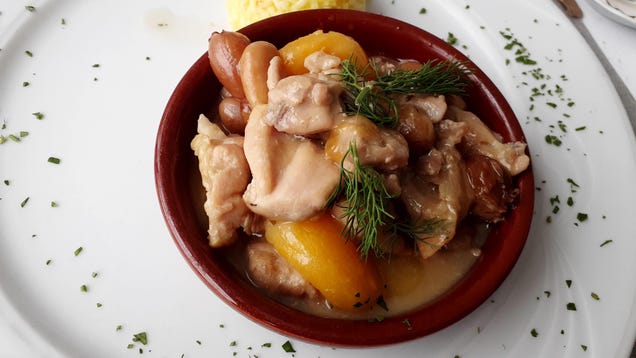The images of Turkey dominating the media right now primarily consist of desperate rescues and a shattered landscape. But the tragedy of the recent earthquake has made an appreciation for this fascinating place feel even more urgent, and more visceral. Thanks to vivid memories from my time spent visiting the country, Turkey will always represent, for myself and countless others, a dynamic blend of ancient history, modern sensibilities, and beautiful, breathtaking cuisine.
When I first landed in Istanbul, I was immediately absorbed by the cityscape: The sapphire waves of the Bosphorus, mosques topped with shining minarets, and winding streets filled with open markets, color-splashed carpets, and people. Every corner boasted an ancient temple, palace, or statue, and yet the city’s vibe managed to feel decidedly contemporary. I stepped inside the mosaic-covered walls of Hagia Sophia Grand Mosque, roamed the gold-embellished Dolmabahçe and Topkapi palaces, and viewed more third- and fourth-century artifacts than I can name.
Istanbul was once Constantinople, the capital of the Holy Roman Empire, and the striking architecture reflects this. But within and beyond the historical facades, the city also hosts a vibrant nightlife scene, with clubs and bars blasting music all night long, design shops and upscale boutiques drawing shoppers, and a sophisticated food culture that I can’t believe I thought I was prepared for.
My first dinner featured various mezze, with which I was familiar thanks to years of eating at Mediterranean restaurants in the United States and elsewhere: Freshly baked bread and a dizzying range of spreads, including eggplant, goat cheese, tomatoes with spinach, and water buffalo curd with honey (bal kaymak) covered the table. All the ingredients were so fresh and expertly blended that the simple spreads tasted like an elaborate feast.
Before we finished the spreads, four more dishes were laid on the table. Platters of fish, meat, skewers, and vegetables, each unparalleled in freshness and rich flavor. I pushed my chair back and exhaled, thinking the meal was done. It was not. Apparently, these were just the appetizers; the main courses arrived next, and then three different desserts. I learned then that Turkish meals are rarely under four courses and that the country’s diverse cultures, histories, and traditions are displayed on each plate.
And so I paced myself as I ate my way through Istanbul. I nibbled on flaky pastry stuffed with seven kinds of cheese and dipped in honey. I dove into mücver, a classic dish of spinach, zucchini, and cheese, and yedikule salad mixed with fennel, grilled olives, fresh herbs, and tomatoes. I downed salty, savory forkfuls of kikas, a tasty weed that grows between rocks near the sea. I sipped salep, a warm, creamy drink made from orchid seeds that tastes like egg nog.
Instead of baklava, I sampled kadayif, noodles stuffed with pistachios and sugar. I even tried the famous tavukgogsu, or chicken milk pudding. The dessert looked like flan, its milky surface sprinkled with cinnamon. After I wrapped my mind around the fact that a dessert can be made from shredded chicken, I took a bite and understood—it tasted like an even richer version of rice pudding. The chicken is cooked until it breaks down into a thickening agent, with no trace of poultry flavor.
I learned that tavukgogsu dates back hundreds of years, allegedly when a sultan at Topkapi Palace demanded something sweet at midnight but all the cooks had on hand was chicken. And it turns out that my favorite Turkish dish, one that feels emblematic of the culture, also dates to this historical period.
The gleaming dome of the Hagia Sophia was on display in the distance as I sat on the enclosed terrace at Matbah Restaurant, which specializes in “Ottoman palace cuisine.” I wasn’t yet sure what that meant, but I was excited to find out. The menu was a miniature book, with detailed descriptions and time periods for dozens of dishes that were served at Ottoman palaces. I selected mahmudiye, a chicken dish that the menu noted dates to 1539. It’s a casserole of sorts, in which the chicken is baked with almonds, apricots, raisins, honey, cinnamon, and lemon juice. The sweet and savory mix intrigued me; I couldn’t anticipate what it would taste like.
The mahmudiye arrived in a ceramic dish accompanied by rice and sprigs of rosemary. The flavor was, as the tavugogsu had been, both decadent and luscious, the chicken perfectly balanced with the sweetness of the fruit—it managed to taste like dinner and dessert in one mouthful. And that was how Istanbul felt, too: ancient and modern, traditional and novel, so much to offer all at once.
THE FIRST E-COMMERCE SPECIALIZED ON TRUFFLES AND TRUFFLE PRODUCTS – TRUFFLEAT.IT

